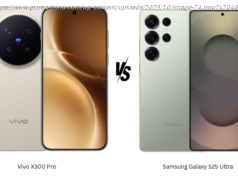Hands on: Spot the difference – Canon’s no-frills entry-level DSLR gets a very minor update.
The EOS 2000D is Canon’s latest entrant into the competitive entry-level DSLR sector, replacing the EOS Rebel T6 / EOS 1300D.
With a relatively low price point (entry-level DSLRs can be noticeably cheaper than a lot of compacts and bridge cameras), these are the cameras that traditionally introduce new users to a brand, with manufacturers hoping it’ll be the one they stick with as they expand their knowledge and grow as photographers.
While the EOS Rebel T7i ( EOS 800D outside the US) is Canon’s more premium entry-level offering, the EOS 2000D is aimed at the more cost-conscious user who’s prepared to sacrifice a few features for a more affordable price. But is the EOS 2000D a compromise too far? Features Main features unchanged from T6 / 1300D New 24.1MP sensor replaces 18.1MP chip Still no touchscreen or 4K video
Canon EOS 2000D specs
Sensor: 24.1MP APS-C CMOS
Lens mount: Canon EF-S
Screen: 3.0-inch, 920,000 dots
Burst shooting: 3fps
Autofocus: 9-point AF
Video: Full HD 1080p
Connectivity: Wi-Fi and NFC
Battery life: 500 shots
Weight: 475g
The only major difference between the EOS 2000D and the EOS Rebel T6 / EOS 1300D is the sensor. Out goes the now very old 18MP sensor, to be replaced by a newer 24.1MP chip – although don’t it expect it to be the latest and greatest one that we’ve seen in the likes of the EOS Rebel T7i / EOS 800D.
While Canon’s now onto its eighth incarnation of is DIGIC image processor with the arrival of the DIGIC 8 unit in the EOS M50, the EOS 2000D sticks with the DIGIC 4+ that was in the EOS Rebel T6 / EOS 1300D – a processor that was already looking pretty dated when that camera was announced a couple of years ago. Native sensitivity remains the same at ISO100-6,400, expandable up to 12,800.
Other headline features remain unchanged: the modest 9-point AF system remains in the EOS Rebel T7 / EOS 2000D (with no sign of Canon’s brilliant Dual Pixel CMOS AF system for brisk Live View focusing), while the flush-sitting 3.0-inch display maintains the same 920k-dot pixel count and foregoes any touchscreen functionality.
There’s also a 95%-coverage optical viewfinder (pretty standard on entry-level DSLRs) – while that may not sound like you’re missing much, it’s worth paying particular attention to the edges of the frame when reviewing images, as you may find unwanted elements creeping into you shots.
Image 1 of 3
Image 2 of 3
Image 3 of 3
Wi-Fi and NFC connectivity also remain, but there’s no Bluetooth Low Energy option as in the likes of the EOS Rebel T7i / EOS 800D.
We haven’t seen 4K video capture on most new Canon DSLR releases, with the exception of the EOS 5D Mark IV, so it’s no surprise not to find 4K on the EOS 2000D. Instead, it offers Full HD (1920 x 1080) video recording, with 30,25 and 24fps frame rates available. Build and handling Plasticky feel overall Logical button placement Missing Canon’s new graphical interface
So the changes on the inside are minimal, and there’s not much new happening on the outside either. In fact, scrub the badges off the EOS 2000D and the older EOS Rebel T6 / EOS 1300D and it would be impossible to tell them apart, thanks to their identical button placements and finishes.
The textured coating on the chunky front grip and the rear thumb rest feels nice to the touch, but the smooth finish to the majority of the exterior means the camera has quite a plasticky feel overall.
The rear button configuration of the EOS 2000D is easy to understand and navigate if this is your first ‘serious’ camera, while the ‘Q’ (short for Quick Menu) button enables you to quickly access and adjust commonly used settings.
Canon has given the EOS 2000D something of a halfway house, with a simple in-camera feature guide
While Canon has introduced a clean-looking graphical interface on its EOS Rebel T7i / EOS 800D and EOS Rebel SL2 / EOS 200D, it hasn’t carried this across to the EOS 2000D, which seems an odd decision – being targeted at new users, the EOS 2000D would really lend itself to this more accessible interface. That said, Canon has given the EOS 2000D something of a halfway house, with a simple in-camera feature guide (swap between shooting modes and you’ll get a brief synopsis of what each one does), but you can’t help feeling it’s missed a trick here. Autofocus 9-point AF system feels dated Coverage biased towards centre of frame Sluggish performance in Live View
Like the processor, the 9-point AF system in the EOS Rebel T6 / EOS 1300D was looking a little dated back in 2016, so it’s disappointing to see this fairly limiting diamond arrangement retained for the EOS 2000D.
With the AF points clustered in the centre of the frame, be prepared to re-frame your subjects if they’re off-centre. Performance-wise, with a single (and more sensitive) cross-type sensor at the centre of the diamond arrangement, the system will be fine for general shooting, although it may struggle once light levels drop.
As the EOS 2000D doesn’t feature Canon’s brilliant Dual Pixel CMOS AF system, focusing speeds in Live View (using the rear screen rather than the viewfinder) are sluggish.
In a nutshell then, the autofocus system on the EOS 2000D comes up short – rival mirrorless cameras offer better coverage and snappier AF, although you’ll probably have to sacrifice a viewfinder. Performance One of the slowest DSLRs available Good battery life
Burst shooting has never been a strong point of entry-level DSLRs, but the EOS 2000D’s paltry 3fps makes it one of the slowest cameras out there.
At 500 shots, the quoted battery life is quite a bit less than that of the camera’s main rival, the Nikon D3400, which is good for a staggering 1,200 shots. That said, it compares very well to similarly priced mirrorless cameras. Early verdict
With the only real difference being the upgrade of the sensor from 18MP to 24.1MP, the EOS 2000D is a hard camera to get excited about. Priced at £469.99 with the EF-S 18-55mm kit lens (US and Australian pricing are still to be confirmed), it’s pitted directly against our current favorite entry-level DSLR, the Nikon D3400.






